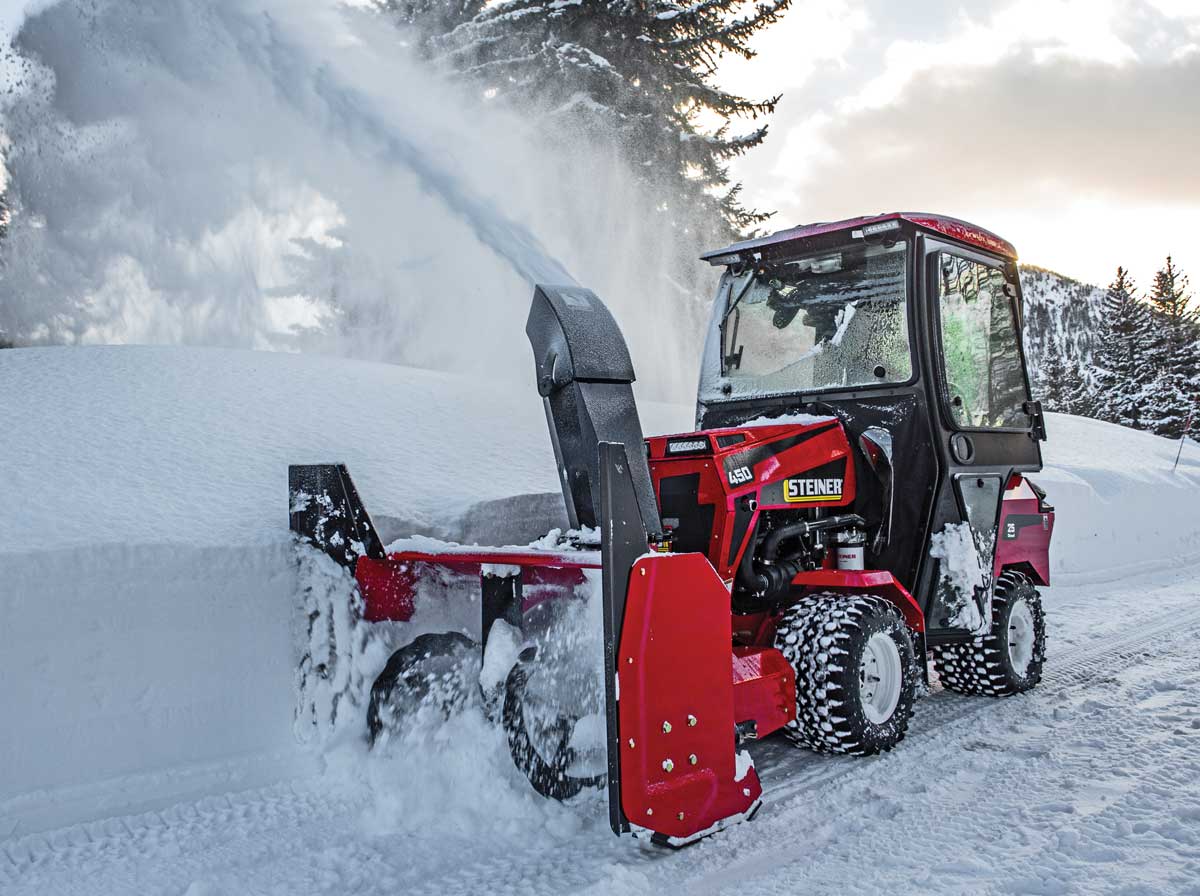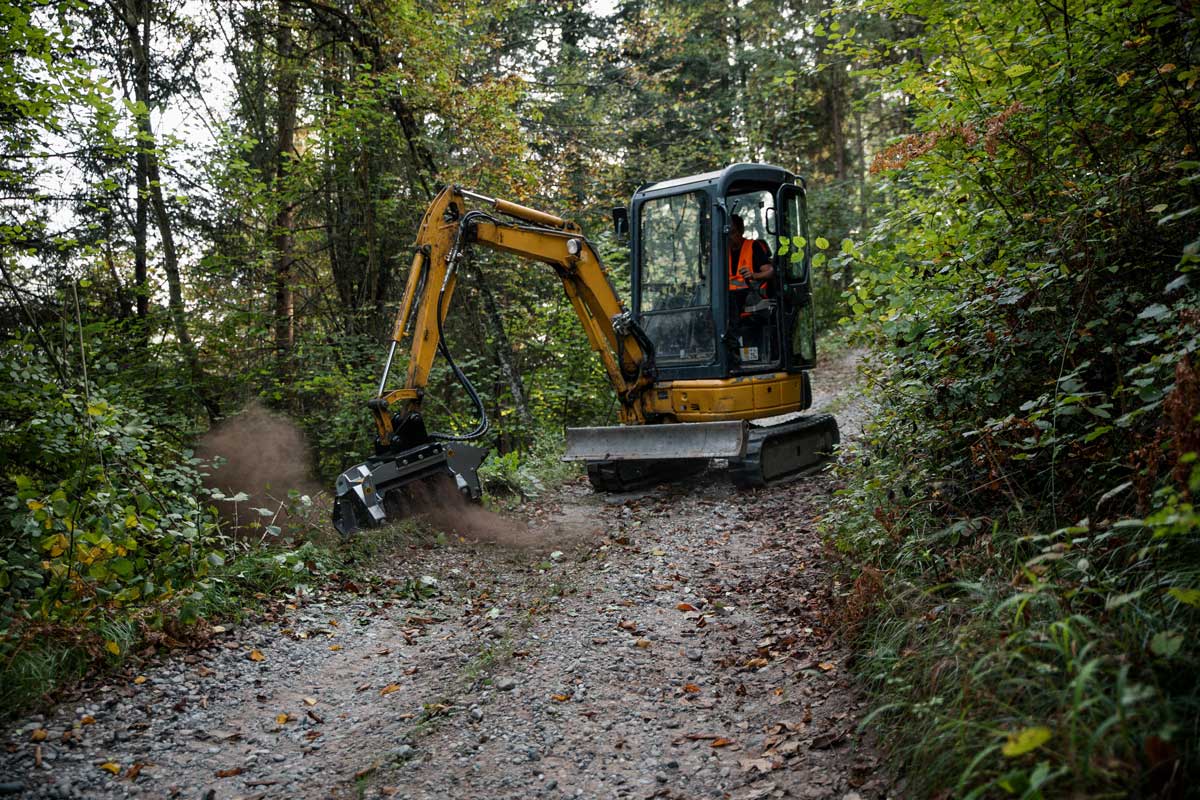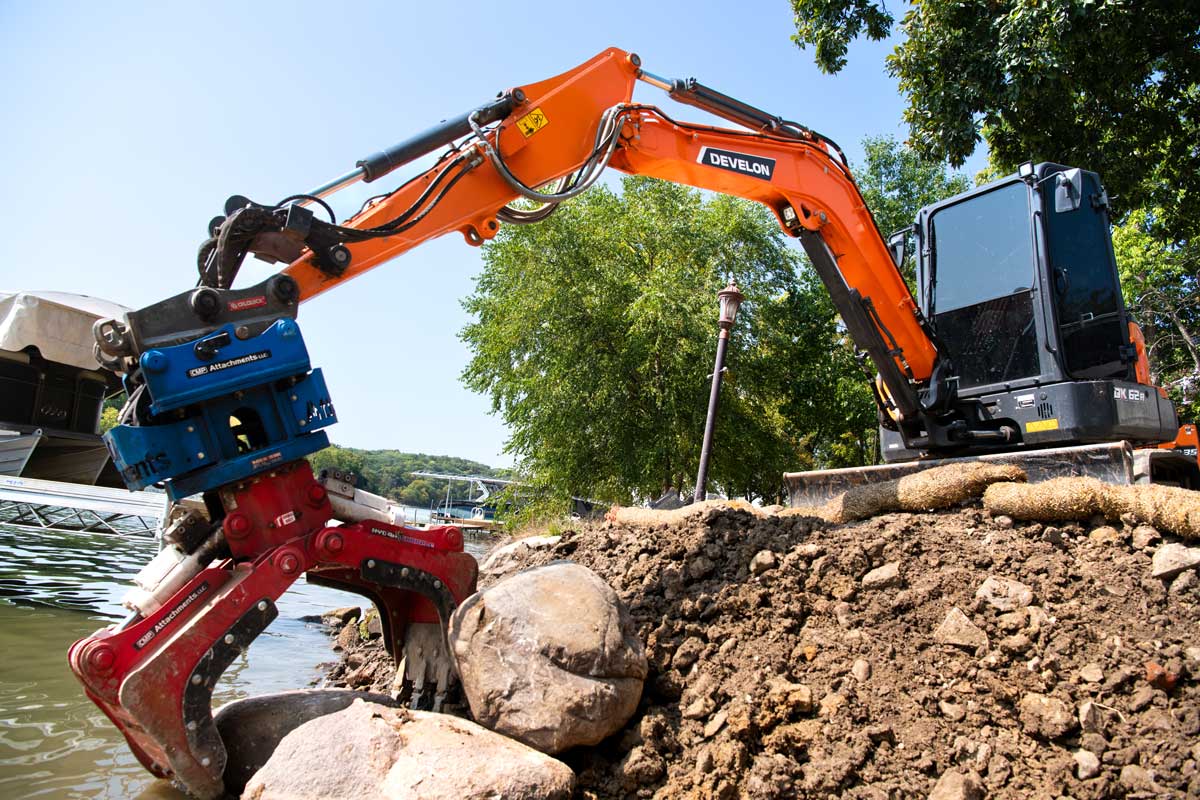Tractor Attachments: Snowblower and Spreader Tips for Upcoming Winter Work
The snowy season is just around the corner (ugh), so it’s time to get prepared. While I will watch the snow fall from inside the house, there are plenty of you who will tackle the elements from the seat of a compact tractor. Below, we gathered insights from two manufacturers on how to outfit your tractor with winter attachments.
Steiner: Ron Scheffler, Senior Product Manager

Snowblower Buying Advice
Buying a professional snowblower attachment for your business is a crucial decision. To ensure that you are finding the right equipment, ask yourself these questions:
- What kinds of areas am I needing to take care of (sidewalks, driveways, etc.)?
- Will I need compact equipment, and if so, how nimble do I need to be with the equipment?
- How often will I need to change between attachments?
Asking yourself these three questions can give you a better understanding of what you need for your business and help narrow your search for the best professional snowblower that fits your needs.
Snowblower Operational Tip
Winter can be incredibly harsh on your equipment. To guarantee that you are taking the best care of your snow blower attachment, ensure that you are using the proper fluids and that they are always topped off. In addition, make sure that all of the moving and rotating parts in your blower are always lubricated and greased in order to fend off rusting and wear. Keep your blower clean and ready for your next job to help prevent snow and ice buildup. Because this snowblower attachment is a snowthrower, be sure to review the auger area to check for any objects that may have damaged or gotten entangled in your equipment.
Snowblower Product Spotlight
The Steiner Professional Snow Blower Attachment features a 16-in. serrated auger that can cut a 48-in. path through the deepest of snow. With its 140-rpm auger speed, you can ensure a smooth and powerful push through any type of snow. The 7-in. diameter chute has a 223-degree rotation which can throw snow out of your path efficiently. Its compact size of 48 in. wide and 44 in. long is the perfect size for plowing sidewalks, driveways and other places that may need a nimble and articulate plow.
Hilltip: Craig Sandmann, North American Sales/Operations Manager

Spreader Buying Advice
Let’s face it — the basic function of a sand/salt spreader isn’t rocket science. Sure, there’s a lot of engineering that goes into a high-quality spreader to make sure material is flowing properly from the hopper to the spinner, but the basic concept of a spreader is pretty straight forward. That being said, gone are the days of just piling on material and hoping for the best. For one, materials are expensive. Also, there is more and more concern about the environmental impacts of the materials being applied. That’s why we highly recommend a spreader that allows for maximum control/precision. Advice for treatment rates is pretty easy to find, but it’s typically not as easy to know how to set the spreader to achieve them. Look for a spreader that can let you lock those rates in and that automatically adjusts on the jobsite, so all the operator has to do is drive.
Spreader Operational Tip
The common advice we give no matter what type of spreader a person is using is to understand what the materials can do … and what they can’t do. There is not a one-size-fits-all situation. For instance, sodium chloride — or rock salt — is probably the most prevalent deicing material. But it’s most efficient when outside temperatures are in the 20-degree Fahrenheit range. If it’s below zero, spreading rock salt is going to be a waste. On the other hand, something like magnesium chloride is great at sub-zero temperatures, but it’s a lot more expensive than rock salt. Spreading it at temperatures where rock salt could be just as effective is a big waste of money.
Spreader Product Spotlight
Hilltip‘s IceStriker 45-100 electric-powered sand/salt spreaders can power through a wide range of materials — bulk salt, bag salt, sand and gravel — thanks to the independently controlled horizontal auger and spinner motor. They are built to last with polymer hoppers and stainless-steel parts to protect against rust and corrosion. What’s truly unique about this line of spreaders is the units are wirelessly controlled using Bluetooth technology and the StrikeSmart control app. Furthermore, as part of the spreader package, we provide a smartphone with the app pre-installed. Automatic GPS speed control adjusts the amount of spreading material according to vehicle speed and the company’s proprietary HTrack tracking system, which allows for remote equipment tracking and geofencing treatment sites, comes standard. This level of technology is rarely seen in spreaders of this size.
Kubota Product Manager Beau Woodbury Talks Snow Blades vs. Blowers
Ultimately, the choice of equipment for most will come down to preference and property. In most cases, a snow blade easily attaches to the front of a tractor and pushes snow out of the way. The speed at which snow blades can clear a large area – especially in comparison to a snow blower – is why large commercial and residential property owners may gravitate toward this type of equipment. Snow blowers are typically used for sidewalks and driveways by allowing the operator to direct the snow where desired. They also allow the operator to move large amounts of snow in a short period of time. Kubota offers a wide range of snow attachments like snow blades and snow blowers to help you clear narrow sidewalks, pathways and larger parking lots. Specifically, the loader mounted straight blade provides an excellent option for clearing or leveling that is needed for snow removal applications. In terms of power units, Kubota has many suitable options in tractors, side-by-side and construction equipment ready for your snow removal needs.




